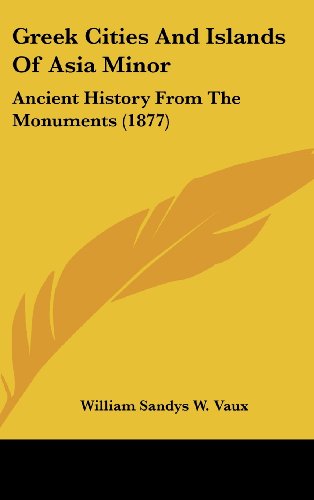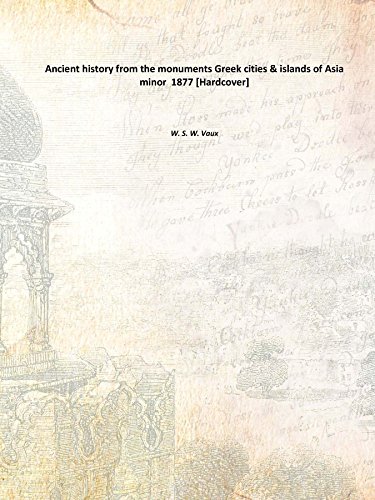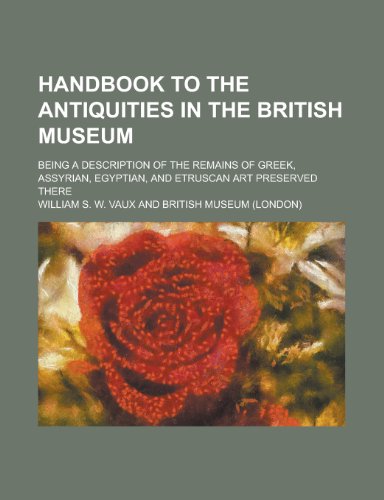Background
Vaux was born in 1818 in Oxford. He was the only son of William Vaux (d 1844), prebendary of Winchester Cathedral and vicar of Wanborough, Wiltshire.



(This scarce antiquarian book is a facsimile reprint of th...)
This scarce antiquarian book is a facsimile reprint of the original. Due to its age, it may contain imperfections such as marks, notations, marginalia and flawed pages. Because we believe this work is culturally important, we have made it available as part of our commitment for protecting, preserving, and promoting the world's literature in affordable, high quality, modern editions that are true to the original work.
http://www.amazon.com/gp/product/1436920663/?tag=2022091-20

(Lang:- English, Pages 197. Reprinted in 2016 with the hel...)
Lang:- English, Pages 197. Reprinted in 2016 with the help of original edition published long back1877. This book is in black & white, Hardcover, sewing binding for longer life with Matt laminated multi-Colour Dust Cover, Printed on high quality Paper, re-sized as per Current standards, professionally processed without changing its contents. As these are old books, there may be some pages which are blur or missing or black spots. If it is multi volume set, then it is only single volume. We expect that you will understand our compulsion in these books. We found this book important for the readers who want to know more about our old treasure so we brought it back to the shelves. (Customisation is possible). Hope you will like it and give your comments and suggestions. Original Title: Ancient history from the monuments Greek cities & islands of Asia minor 1877 Hardcover, Original Author: W. S. W. Vaux
http://www.amazon.com/gp/product/B011LCMF1W/?tag=2022091-20

(This historic book may have numerous typos and missing te...)
This historic book may have numerous typos and missing text. Purchasers can usually download a free scanned copy of the original book (without typos) from the publisher. Not indexed. Not illustrated. 1851 edition. Excerpt: ...and a dead lion lies on the plain before it. The fourth and fifth slabs in like manner refer to the chase of the wild Bull. On the First the King, in his chariot, is represented plunging a knife or dagger into the soft part of the head of a bull between the horns, while a dead bull lies under or before his chariot. Behind, is a horseman following at full gallop, carrying in his right hand a spear with an ornament attached to the end of it, not unlike that of our Lancers. The Second represents the return of the King in triumph from a successful hunting. As on the former slab, so on this, four figures are before the King, an eunuch with the fly-flapper, and a warrior and two musicians, while behind him is another eunuch and the umbrella, and three soldiers of the Royal guard. At the feet of the King lies a dead bull. 5. Miscellaneous Subjects and Fragments. Among these, are three which have a continuous subject, and represent the Crossing of a River, probably one of the numerous expeditions in which the King of Assyria went out from Nineveh and crossed the Euphrates, and which are mentioned repeatedly upon the Obelisk Inscription. On the first we seethe commencement of an embarkation. An eunuch is standing, on the left hand of the picture, between two warriors, with a short whip in his hand; in front of him are two other soldiers, one inflating a skin, and the other standing on the bank of a river and fastening the end of a similar inflated skin, so as to prevent the escape of the air. Close to the shore a boat is moored, in which one chariot has been placed, and into which another is being lifted. In the stream are seen two warriors swimming, one on an inflated skin, the other without this assistance. The second slab is a continuation of...
http://www.amazon.com/gp/product/1155113616/?tag=2022091-20
Vaux was born in 1818 in Oxford. He was the only son of William Vaux (d 1844), prebendary of Winchester Cathedral and vicar of Wanborough, Wiltshire.
He was educated at Westminster School from 1831 to 1836, and matriculated from Balliol College, Oxford, on 18 March 1836, graduating Bachelor 1840 and Master of Arts
1842.
In 1841 he entered the department of antiquities of the British Museum, and in January 1861 became the keeper of the department of coins and medals, a post which, owing to ill-health, he resigned in October 1870. He was connected with the early development of the Oxford Movement in London, and his rooms were a frequent place of meeting for the sub-committees connected with the London Church Union and the foreign chaplaincies. From 1871 to 1876 he was engaged in cataloguing the coins in the Bodleian Library.
In 1852 he became one of the secretaries, and for some time assisted John Yonge Akerman in editing the first series of the Numismatic Chronicle, in which he himself wrote twenty-five papers.
In 1855 he was elected president, and remained in office until 1874. Foreign many years the society met in his rooms in Gate Street, Lincoln"s Inn Fields.
On 4 June 1868 he became a fellow of the Royal Society. From November 1875 to his death he was the secretary of the Royal Asiatic Society, and for many years secretary to the Royal Society of Literature.
He died at 102 Cheyne Walk, Chelsea, London, on 21 June 1885, having married on 11 July 1861 Louisa, eldest daughter of Francis Rivington of Harley Street, London.
(This scarce antiquarian book is a facsimile reprint of th...)
(This historic book may have numerous typos and missing te...)
(Lang:- English, Pages 197. Reprinted in 2016 with the hel...)
Royal Society]
From 1846 he was a member of the Numismatic Society, and — according to the Dictionary of National — to his friendly care much of the success of that body is due. Vaux became a member of the Canterbury Association on 5 April 1850.
